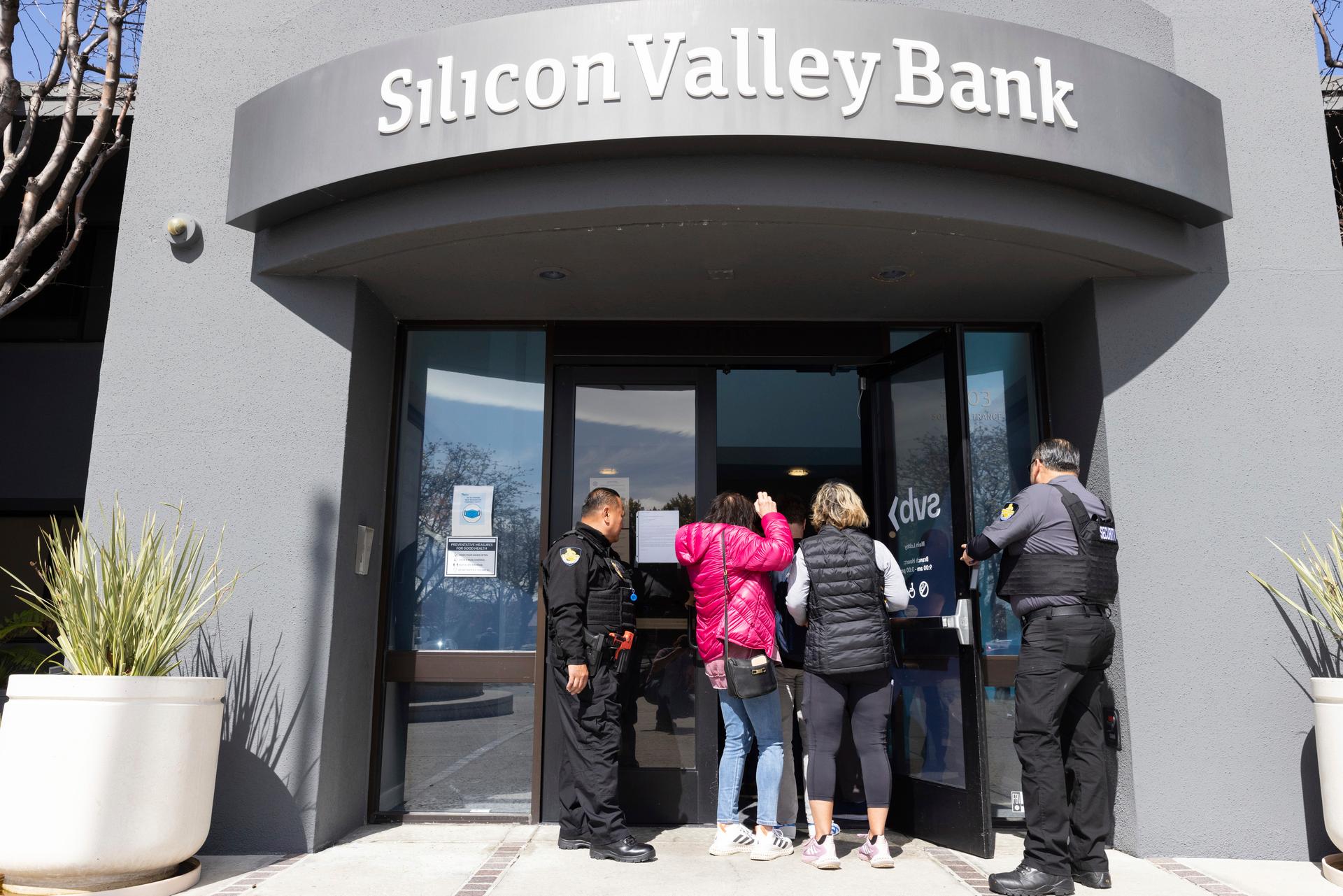One bank fails, not a big deal. Unless you have a lot of money in that bank. For the rest of us, the big risk is “contagion.”
“Contagion is really, obviously, taken from a medical term,” said Galina Hale, an economist at the University of California Santa Cruz and former adviser with the Federal Reserve.
She explained that just as an infectious disease spreads, the same thing can happen in the banking world.
“So, contagion is essentially, when a problem in one financial institution is creating problems for others, otherwise healthy financial institutions.”
In the case of Silicon Valley Bank, which collapsed on March 10, it went too big on bond investments. Depositors got spooked, wanted their money out right away, and a bank run ensued. Then, fear started to spread.
“What we see internationally is mostly this wakeup call, contagion, right?” said Hale, who is also a contributor to Econofact. “So, people realize, ‘Oh, I thought the banks would never fail again, but now, they actually are. So, let me see what’s happening with my bank.’”
The Federal Reserve is meeting this week to address the situation. They’ll decide whether to keep raising interest rates to tame inflation or pull back to ease pressure on the banks.
Global investors are watching anxiously as the Federal Reserve’s decision will have big impacts around the world.
Banks are different from other businesses. When one bank goes bust, it can ripple through the industry.
The problems at Credit Suisse were different than at Silicon Valley Bank. And to be clear, Credit Suisse was not a healthy bank — its balance sheet also looked shaky, filled with bad investments.
Still, when a few US banks went down, investors in Credit Suisse got panicky. Then, that set off worries about a possible chain reaction.
But this is not 2008. Regulations in the US and Europe are much stronger today than they were 15 years ago.
And after that disaster, tighter global regulations were put in place as well as country-specific laws. Banks are now required to keep more capital on hand in case there’s a bank run.
Today, banks go through tougher stress tests to ensure that they can handle a worst-case scenario.
US Treasury Secretary Janet Yellen, talking to Congress last week, said that the situation is stabilizing.
“I can reassure the members of the committee that our banking system is sound, and that Americans can feel confident that their deposits will be there when they need them,” Yellen said.
Yellen’s words, and quick action, have been reassuring to the global financial industry.
“A lot of the framework that applies in the US is also applied in Europe and in Asia, meaning that across the whole financial system, the biggest, most important institutions are largely regulated in a similar way,” said Bob Elliott, the chief information officer of the investment firm Unlimited, an issuer of exchange-traded funds. “So, we can be confident that those institutions are being managed as effectively abroad as they are domestically.”
He said that when troubles start in the banking sector, investors look for a quick, regulatory response.
“And the faster and more agile that they do, the less impact that will have on investors and the macro economy. And so far, regulatory authorities both in the US, and Europe and Switzerland have done a pretty good job at being responsive.”
Kenneth Rogoff, an economics professor at Harvard University, said he thinks the problem can be contained.
“We have to understand that financial crises unfold in waves. There are more waves to come. I mean, getting to the level of 2008, which was the worst thing since the Great Depression, we’ve got a ways to go to get to that.”
Rogoff said that central bankers are keenly aware of the risks this time. But, rescue operations underway in the US and Europe have a high cost as governments once again come to the rescue with big bailouts.
“I believe they did the right thing, let me be clear,” he said. “But there was no way to do it without at least putting taxpayer money at considerable risk.”
Helping out failing banks creates two additional problems. First, it incentivizes banks to take more risks.
“Pretty much everything has been guaranteed, and that’s not a good position to be in because then, banks just take too many risks. Now, the government is saying, ‘Don’t worry about it; we’re going to regulate everything.’”
But too much regulation can slow the entire economy down, making it harder for homebuyers or businesses to get a loan.
Farrah Haytham contributed to this report.
